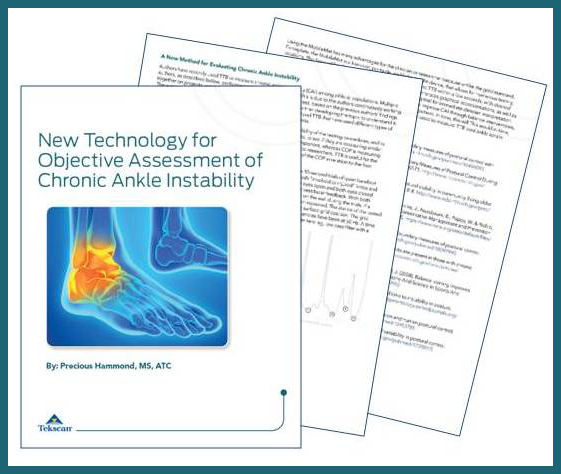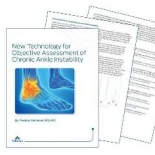Chronic ankle instability (CAI) is a common musculoskeletal injury typically attributed to deficits in single limb balance. Historically, clinicians and researchers have conducted balance assessments based on center of pressure displacement measurements, however more recently, time-to-boundary (TTB) has been utilized because of its ability to discriminate postural control deficits present in subjects with CAI.
TTB is a validated and reliable tool that you can use to evaluate CAI.
Download this whitepaper to explore:  Download this whitepaper to learn more about time-to-boundary and the measurement tools you can use to objectively assess and manage chronic ankle instability.
Download this whitepaper to learn more about time-to-boundary and the measurement tools you can use to objectively assess and manage chronic ankle instability.
- The relationship between chronic ankle instability and time-to-boundary
- The differences between TTB and Limits of Stability (LOS)
- How TTB can be used to measure and evaluate CAI
- Related TTB studies performed to:
- Determine good intersession reliability of TTB for single limb balance
- Examine correlations between TTB and traditional center of pressure (COP) measurements in subjects with CAI
- Show TTB to be sensitive to detecting improvements in SL balance post CAI interventions
- And more!
- A new, mobile system that provides objective and quantitative data to assess stability
Learn more about Tekscan Biomechanical Applications.
